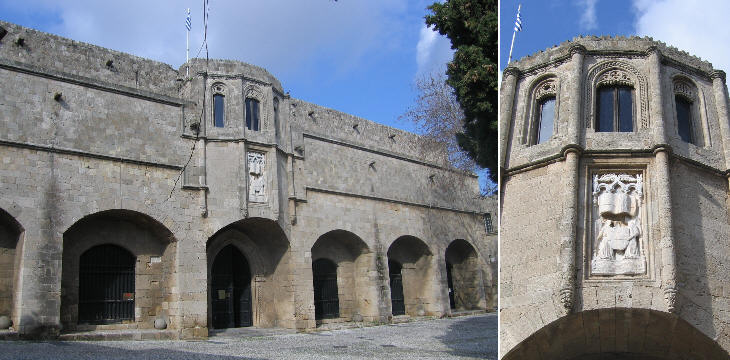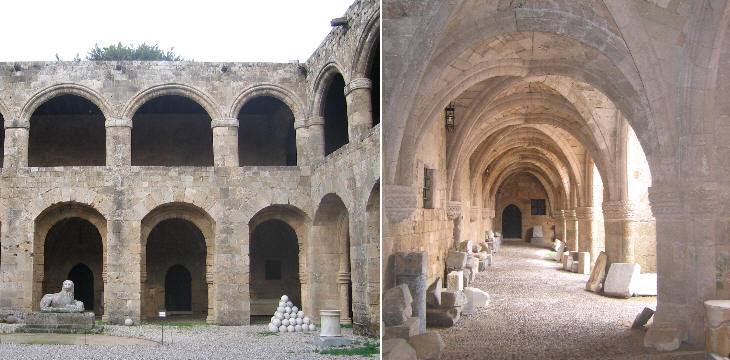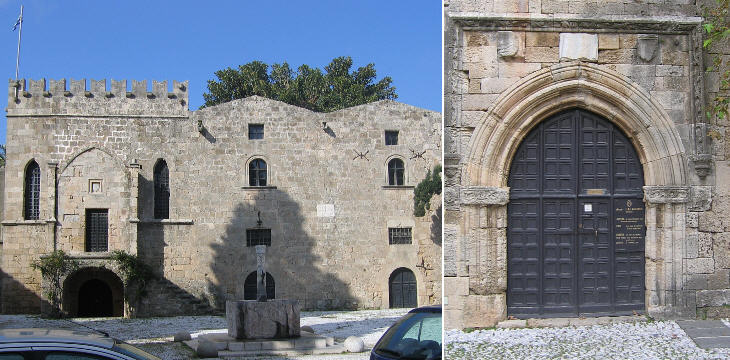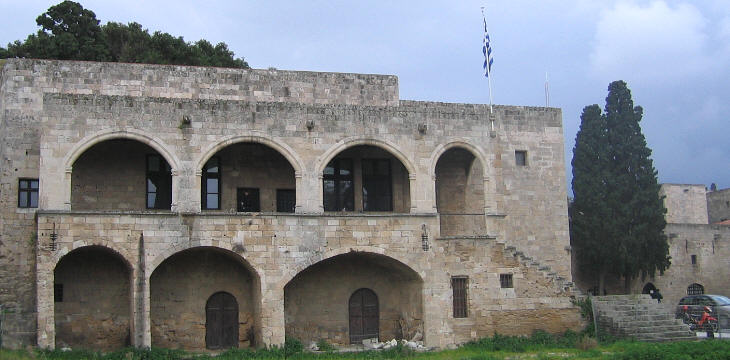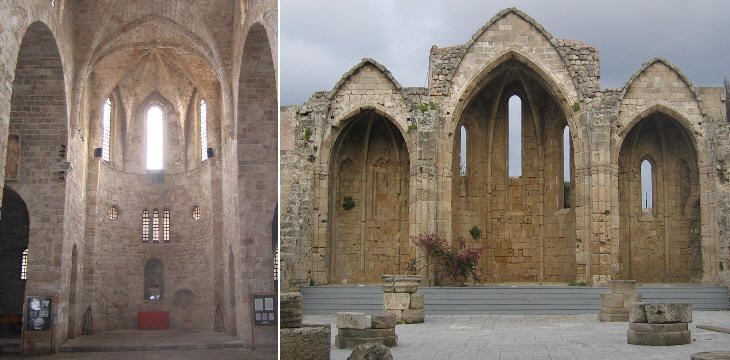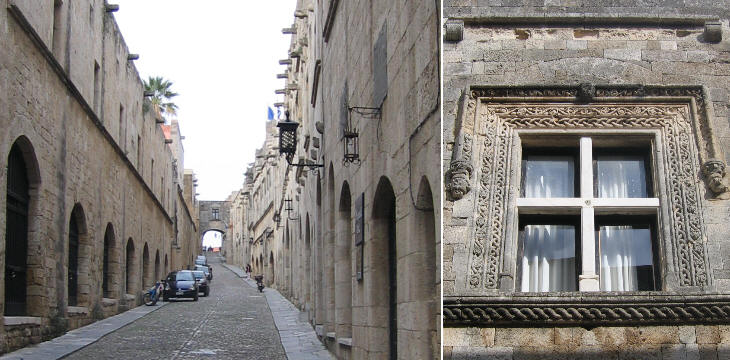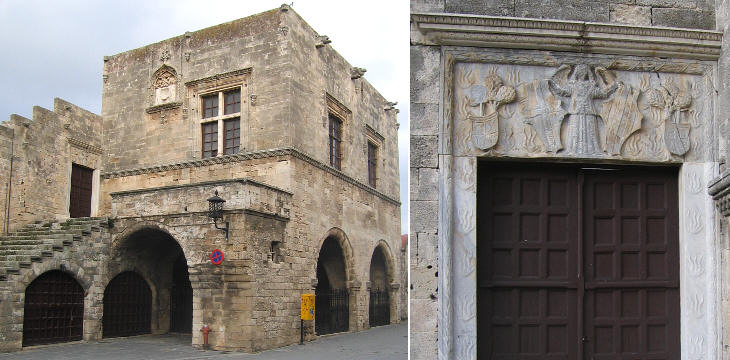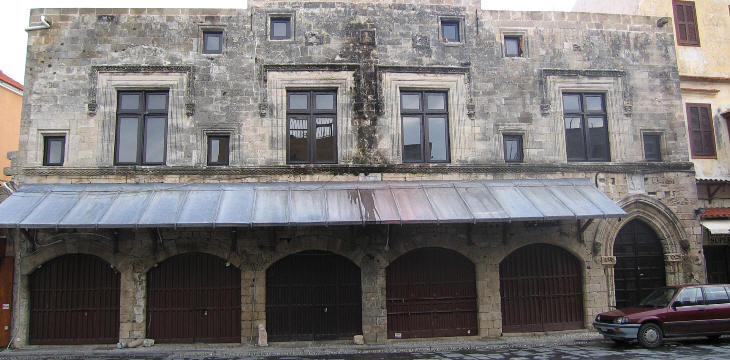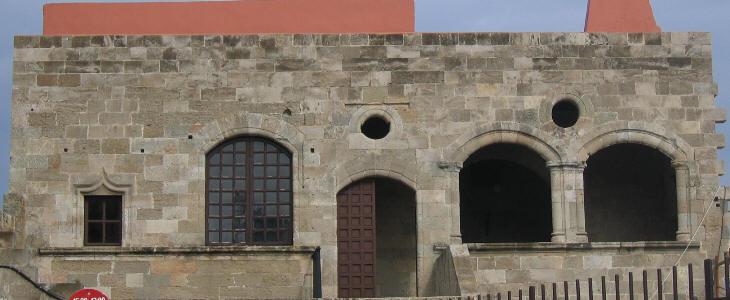  What's New! Detailed Sitemap All images © by Roberto Piperno, owner of the domain. Write to romapip@quipo.it. Text edited by Rosamie Moore. Page added in March 2007. |
 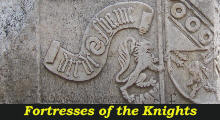 The Town of the Knights The Town of the Knights(relief in the fortress of Bodrum) The Knights lived in the northern section of the town in an area reserved to them which was called Collachio: the rest of the town was called Burgo (by the Knights) or Hora (by the Greeks).
The Knights did not forget the original purpose of their Order and so one of the most imposing buildings of Collachio is the Hospital which was built by Grand Master Jean de Lastic in 1440 and enlarged by Grand Master d'Aubusson in 1481-89. It was restored by the Italian administration in 1913-18 and later on used to house the Rhodes Archaeological Museum. The ward for the sick was located in the upper floor, while warehouses and stables were at the ground level.
The hospital had a large courtyard surrounded by a double portico built using a design typical of Gothic architecture.
The Hospital built by Grand Master Lastic replaced an older one built by Grand Master Roger des Pins (1355-65), which later on was used as a general armoury. The Knights were divided into groups according to their lands of origin which were called Langues, rather than nations: each Langue built a small palace which served for meetings and as official residence of the Langue chief knight. In the early days of the Order in Rhodes the written language was French; towards the first half of the XVth century there was a move to Latin and after 1454 also to Italian. The spoken language in late XVth century was most likely lingua franca, a sort of Esperanto with many Italo-Venetian features.
There were seven Langues: Germany, England, Italy, Spain, France, Provence (south-eastern France), Auvergne (a region in the centre of France). In 1462 the Langue of Spain split into Castille and Aragona. Each Langue was responsible for the defence of a section of the walls.
The Langues which had a leading role in the Order were those of Provence and Auvergne and this influenced the architecture of Collachio, which has features typical of southern France; Catholic churches had a Gothic design, similar to that existing in nearby Cyprus (which was ruled by the Lusignan who came from southern France too).
The main street of Collachio started from the square where the Hospital, the Cathedral and the Hotel de la Langue d'Auvergne were located and led to the Citadel, a fortified building where the Grand Masters had their residence. Several Langues had their palaces along the street: they had decorated portals and windows in addition to many coats of arms. However not everything we see today is original: walking through Knights' street gives the feeling of being in another Carcassonne (the town in southern France which was so largely restored by architect Viollet-le-Duc to become more a symbol of XIXth century extravagance, than evidence of a medieval fortified town). The Citadel was almost entirely destroyed in 1856 when a forgotten underground powder-house was struck by lightning. The Turks built on the site a military hospital, using the ruins of the Citadel. Today's Palace of the Grand Masters is a modern building.
Burgo was the part of town where the merchants lived and had their warehouses; the suits arising from their trade were settled in this elegant palace which was built by Grand Master d'Amboise at the beginning of the XVIth century.
Another fine building of Burgo, notwithstanding its name, was most likely the residence of the Orthodox Bishop; the Knights were faithful to their promise to allow the Greeks to retain their allegiance to the Orthodox Church and in Burgo there were many churches in the traditional Byzantine style.
Domenico d'Alemagna, an Italian Knight, built towards the end of the XIVth century a residence for guests of the Order. After being greatly damaged during the 1480 siege and by an earthquake in 1481, it was rebuilt in 1516 by Costanzo Operti, another Italian Knight. The image used as background for this page shows a portal on the side of "Castellania" Move to: Introductory page Rhodes: the Gates Rhodes: the Fortifications Rhodes: Byzantine, Ottoman and Jewish memories Rhodes: modern Italian architecture Kos: the fortress Kos: the ancient town St Peter's Castle (Bodrum) Castelrosso Calimno Lero Symi Nissiros Lindos Other fortresses Fortress of the Orthodox church Patmo (Patmos) Clickable Map of the Ionian and Aegean Seas with links to other locations covered in this website (opens in a separate window)  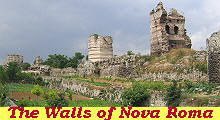  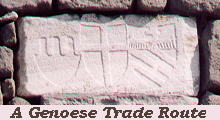 |
